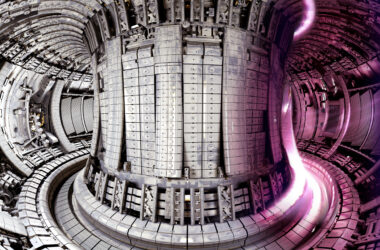In a potentially significant development for sustainable hydrogen-powered propulsion systems, Red Bull Advanced Technologies (RBAT) and AVL have announced a collaboration to create the next generation of ultra-high-power density fuel cell technology.
The partnership aims to develop lightweight solutions that are expected to be two-thirds lighter than conventional fuel cell systems. This could potentially enable wider adoption of hydrogen fuel cell technology in high-performance applications across the automotive, motorsport, and aviation industries.
The collaboration brings together the expertise of two industry leaders. AVL, a mobility technology company, contributes its industry-leading portfolio of PEM fuel cell technology, while RBAT, the high-performance engineering arm of Red Bull Racing Group, offers its winning technologies and novel methodologies in lightweight design, construction, and aerodynamics. By combining their strengths, the partners hope to deliver a fuel cell system for high-performance applications that surpasses those currently available globally.
Understanding Hydrogen Fuel Cells: A Clean Energy Solution
As the world seeks sustainable energy solutions to combat climate change and reduce our reliance on fossil fuels, hydrogen fuel cells have emerged as a promising technology.
A hydrogen fuel cell is an electrochemical device that converts the chemical energy of hydrogen and oxygen into electricity, with water and heat as byproducts. Unlike traditional combustion engines, fuel cells produce electricity through a clean and efficient chemical reaction, making them an attractive option for powering vehicles, generators, and other applications.
How Does a Hydrogen Fuel Cell Work?
Three main components—an anode, a cathode, and an electrolyte membrane—are at the heart of a hydrogen fuel cell.
- Anode: Hydrogen molecules are fed into the anode, where a catalyst (usually platinum) splits them into protons and electrons.
- Electrolyte Membrane: The protons pass through the electrolyte membrane while the electrons travel through an external circuit, generating an electric current.
- Cathode: At the cathode, the protons, electrons, and oxygen from the air combine to form water and heat.
The chemical reaction in a hydrogen fuel cell can be summarized as follows:
Anode reaction: H2 → 2H+ + 2e-
Cathode reaction: 1/2 O2 + 2H+ + 2e- → H2O
Overall reaction: H2 + 1/2 O2 → H2O + electricity + heat
There are several types of hydrogen fuel cells, each with unique characteristics and applications:
- Proton Exchange Membrane Fuel Cells (PEMFCs): PEMFCs are the most common type of fuel cell, known for their high power density and fast startup times. They operate at relatively low temperatures (60-100°C) and are well-suited for automotive and portable applications.
- Solid Oxide Fuel Cells (SOFCs): SOFCs use a solid ceramic electrolyte and operate at high temperatures (800-1000°C). They are highly efficient and can utilize a variety of fuels, making them ideal for stationary power generation.
- Alkaline Fuel Cells (AFCs): AFCs used an alkaline electrolyte and were one of the first fuel cell technologies developed. They have been used in space missions and have the potential for low-cost production.
- Molten Carbonate Fuel Cells (MCFCs): MCFCs use a molten carbonate salt as the electrolyte and operate at high temperatures (650°C). They are well-suited for large-scale stationary power generation and can use a variety of fuels.
Hydrogen fuel cells offer numerous advantages as a clean energy solution. One of the most significant benefits is their ability to produce electricity with water and heat as the only byproducts, making them a zero-emission energy source when hydrogen is derived from renewable sources.
Fuel cells can convert chemical energy into electrical energy more efficiently than traditional combustion engines, typically reaching 40-60% efficiency. This versatility is another key advantage, as hydrogen fuel cells can be used in various applications, from powering vehicles to generating electricity for buildings and portable devices. The absence of moving parts allows fuel cells to operate quietly, making them suitable for use in residential and urban areas. Furthermore, fuel cells can be stacked to increase voltage and current output, enabling a wide range of power outputs to suit different applications.
There are numerous applications across various sectors. In the transportation industry, fuel cell electric vehicles (FCEVs) are gaining traction as an alternative to battery electric vehicles (BEVs). Major automakers like Toyota, Honda, and Hyundai have already introduced commercial FCEVs, offering longer ranges and faster refuelling times than BEVs.
Fuel cells can also provide reliable and efficient power for residential, commercial, and industrial buildings in the stationary power generation sector.
Combined with heat recovery systems (cogeneration), overall efficiencies can reach up to 85%. Portable fuel cell systems, weighing less than 10 kg and providing power under 5 kW, have potential applications in the leisure, industrial, and military sectors, offering high energy density and extended runtime compared to battery-powered systems. Fuel cells can serve as emergency power sources for critical infrastructure, such as hospitals, data centres, and telecommunication equipment, ensuring an uninterrupted power supply during grid outages.
Despite the numerous advantages of hydrogen fuel cells, several challenges need to be addressed for widespread adoption:
- Infrastructure: A lack of hydrogen refuelling infrastructure is a significant barrier to the widespread adoption of fuel cell vehicles. As of 2019, only 330 publicly available hydrogen refuelling stations were worldwide.
- Cost: Fuel cell systems remain expensive, primarily due to the use of precious metal catalysts like platinum. Research is ongoing to develop lower-cost materials and manufacturing processes.
- Hydrogen Production: Currently, most hydrogen is produced from fossil fuels, limiting fuel cells’ environmental benefits. Increasing hydrogen production from renewable sources, such as solar and wind power, will be crucial for realizing fuel cells’ full potential as a clean energy solution.
Despite these challenges, the future of hydrogen fuel cells looks promising. With continued research and development, cost reductions, and infrastructure expansion, fuel cells have the potential to play a significant role in the transition to a sustainable energy future.
Technical Details of the Targeted Fuel Cell Technology
Joint investigations by RBAT and AVL indicate that dramatic improvements in gravimetric power density can be achieved upon successful completion of the project. The targeted values are approximately 6kW/kg on the stack level and 2kW/kg on the fuel cell system level. If realized, this technology has the potential to result in the world’s highest gravimetric power density PEM fuel cell system.
Potential Applications in Automotive, Motorsport, and Aviation Industries
The lightweight, high-power density fuel cell technology being developed by RBAT and AVL has numerous potential applications across various industries:
- Automotive: The technology could be utilized in high-performance vehicles, enabling them to achieve better performance while reducing their carbon footprint.
- Motorsport: The FIA is focusing on developing and promoting liquid hydrogen storage solutions across different disciplines and competitions, and this technology could play a crucial role in the future of motorsport.
- Aviation: The fuel cell system’s lightweight nature makes it particularly attractive for aviation applications, where weight reduction is a critical factor in improving efficiency and reducing emissions.
The RBAT and AVL collaboration could represent a significant net-zero carbon tech milestone. By enabling sectors such as aerospace, future motorsport series, and other maximum payload applications to have the power density figures required in hydrogen mobility, this partnership could contribute to the global effort to reduce carbon emissions and combat climate change.
While the potential benefits of the RBAT and AVL collaboration are significant, challenges remain in bringing this technology to market. Further research and development will be required to refine the fuel cell system and ensure its reliability and durability in real-world applications. Additionally, the adoption of hydrogen fuel cell technology will depend on developing the necessary infrastructure and the willingness of industries to embrace this new technology.
The collaboration between Red Bull Advanced Technologies and AVL to develop lightweight, high-power density fuel cell technology could have far-reaching implications for the automotive, motorsport, and aviation industries. It could contribute to the global effort to reduce carbon emissions and achieve net-zero targets.
TLDR:
- Red Bull Advanced Technologies and AVL collaborate to develop lightweight, high-power density fuel cell technology
- Targeted fuel cell system expected to be two-thirds lighter than conventional systems
- Potential applications in automotive, motorsport, and aviation industries
- The collaboration aims to contribute to net-zero carbon emissions goals
- Challenges include further R&D and infrastructure development








